Top 10 Places to Visit in Alsace
Bordered by Germany and Switzerland, Alsace is one of France’s most distinctive regions. Timbered villages sit among vineyards, castles crown rocky ridges, and cities like Strasbourg and Colmar carry centuries of history. In a small area, you’ll find both grand monuments and quiet corners that feel unchanged for generations.
Here are 10 of the most beautiful places to see on a trip to Alsace.
1. Strasbourg
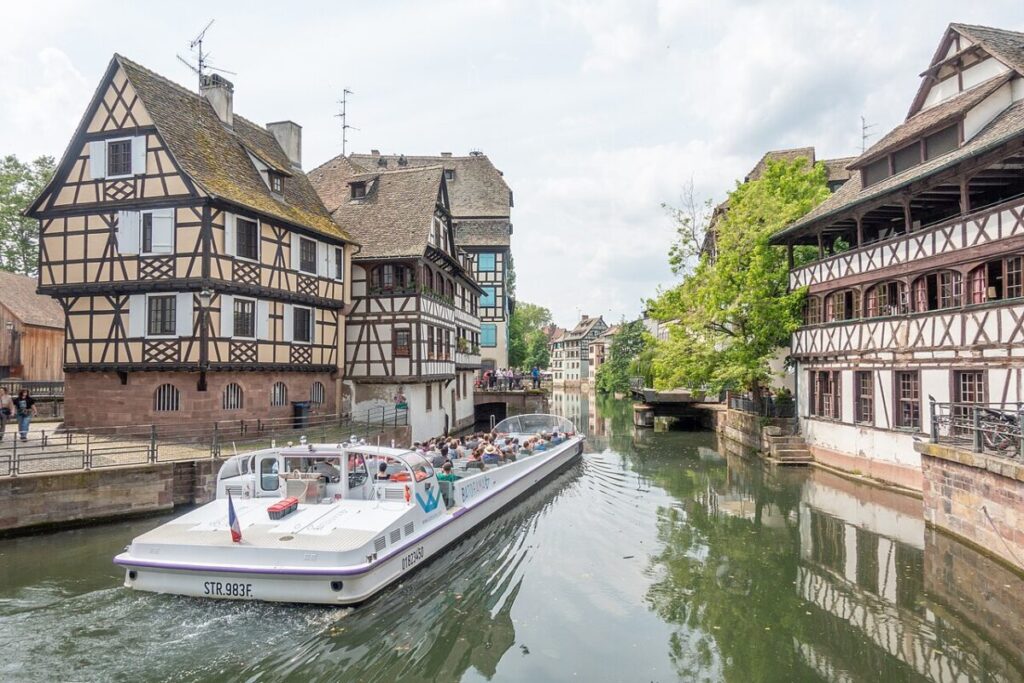
Strasbourg is the region’s capital and one of Europe’s crossroads. The old town, the Grande Île, is ringed by the River Ill and listed as a UNESCO World Heritage site.
The cathedral dominates the skyline with its 142-meter spire, once the tallest building in the world. Inside, travelers stop at the astronomical clock, a 19th-century masterpiece that tracks everything from the solar cycle to the phases of the moon.
Climb the 330 steps of the viewing platform for a panorama over the city and the Black Forest across the Rhine.
The surrounding quarter, known as Petite France, was once home to tanners and millers. Half-timbered houses lean over canals, with flowers hanging from window boxes in summer. Covered bridges and the Vauban dam still guard the western edge.
Strasbourg is also famous for its role today: the seat of the European Parliament and a symbol of Franco-German reconciliation.
2. Colmar
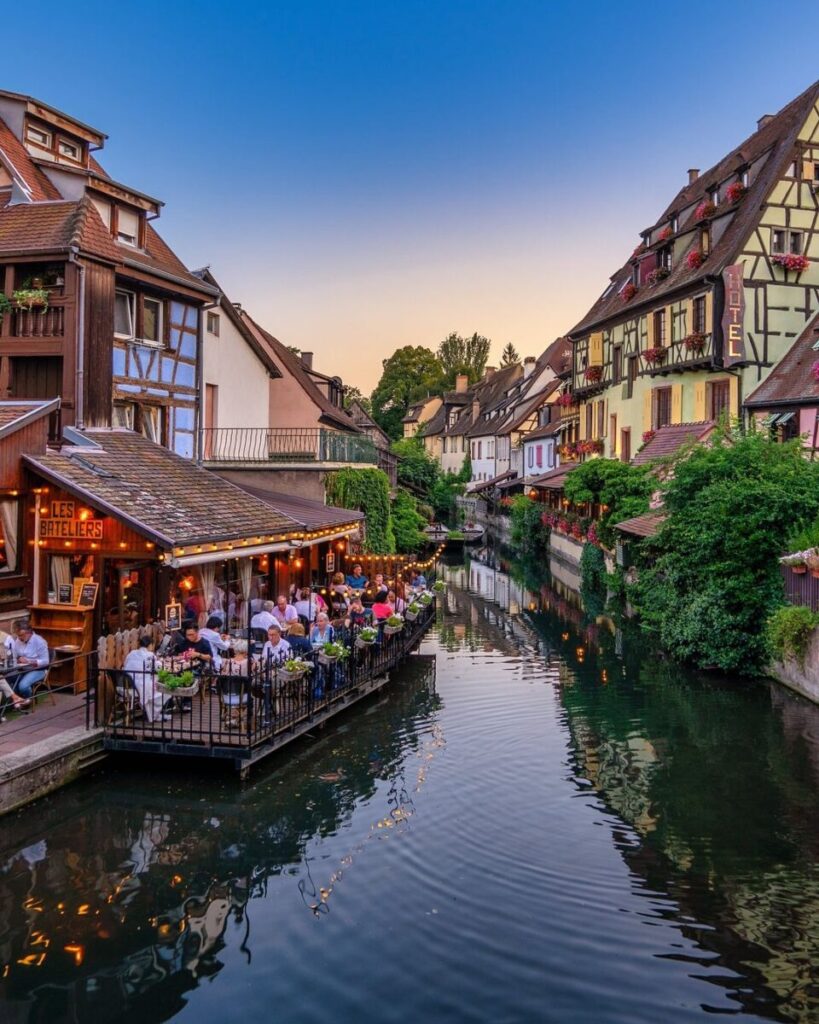
Colmar looks like it was designed to be painted. Pastel façades and steep-roofed houses crowd together along the Lauch River. The area called Little Venice is especially photogenic, with boats gliding under small bridges.
The city is also rich in art: the Unterlinden Museum displays the Isenheim Altarpiece, a work by Matthias Grünewald whose vivid colors and haunting figures have inspired artists for centuries.
Colmar has more museums than its size suggests. The Bartholdi Museum is set in the birthplace of the sculptor who designed the Statue of Liberty.
For many travelers, the greatest pleasure is walking without a map, ducking into wine bars, and noticing how the houses tilt and twist after centuries of life.
3. Eguisheim
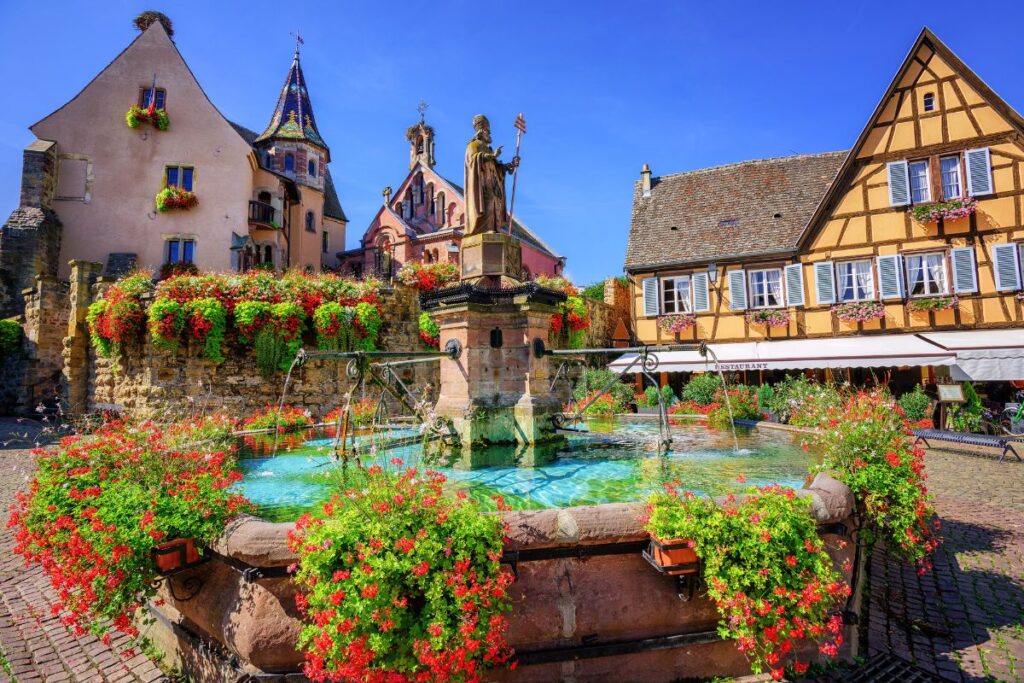
Eguisheim is organized in rings. Streets circle outward from a central château, each lined with flower-decked houses painted in warm shades of yellow, green, and red.
The circular layout dates back to the Middle Ages and makes wandering here feel like turning the pages of a storybook.
Wine is everywhere: the vineyards come right up to the gates, and producers welcome visitors into their cellars.
4. Riquewihr
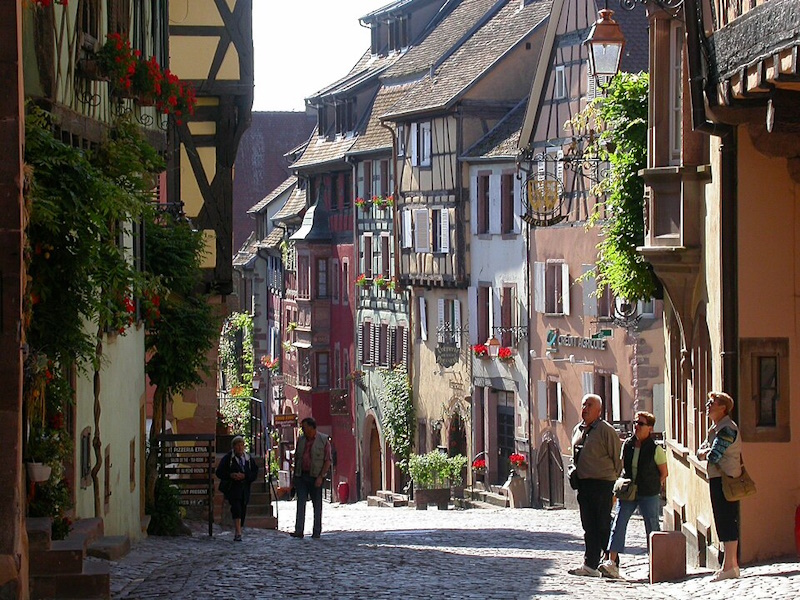
Riquewihr’s town walls are still intact, giving it that unique medieval feel. Towers mark the entrances, cobbled lanes lead through arcades, and painted signs hang above doorways.
It was once a stronghold of the Dukes of Württemberg, who taxed the wine trade. Today, tasting Riesling here feels like joining a tradition that has lasted for centuries.
The surrounding hills are threaded with walking paths that link Riquewihr to Ribeauvillé and Hunawihr.
5. Ribeauvillé
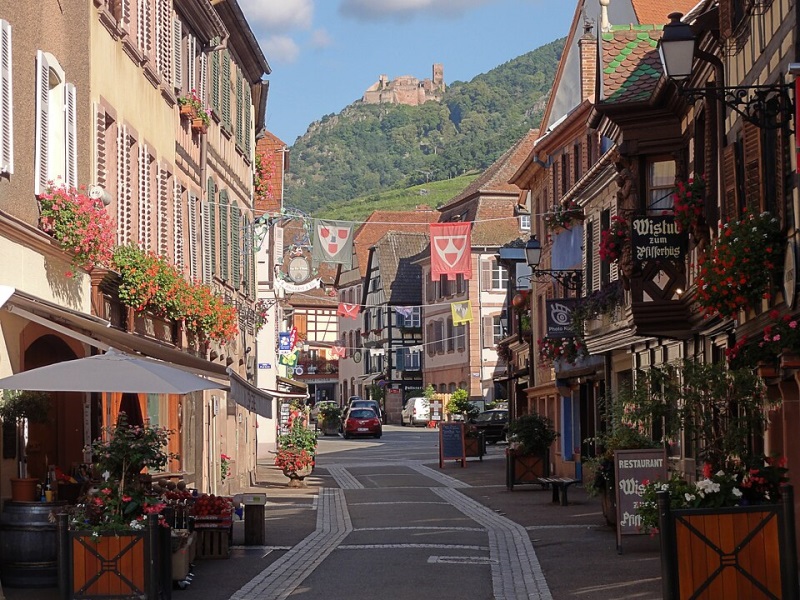
Ribeauvillé stretches toward the Vosges under the watch of three ruined castles. The town’s main street is long and narrow, lined with Renaissance houses and fountains.
Musicians gather in September for the Pfifferdaj, the Fiddlers’ Festival, a tradition said to date back to the Middle Ages.
Travelers also come for the Christmas market which transforms the old lanes into a winter village.
6. Kaysersberg
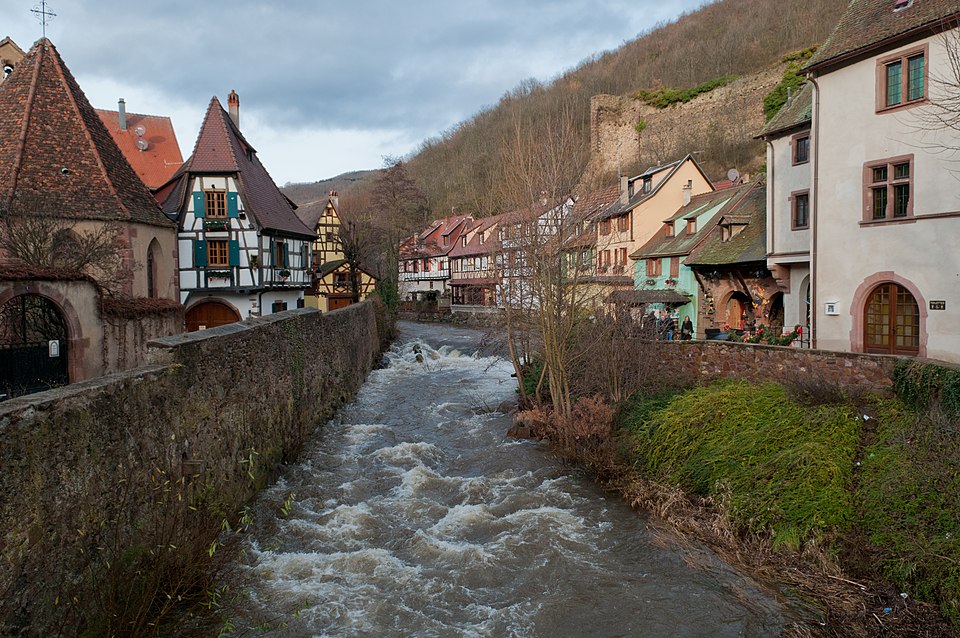
Kaysersberg has a river running through its heart. The Weiss cuts under a fortified stone bridge, one of the town’s landmarks. Above it rises the ruin of a castle keep, reached by a short walk through vineyards.
The streets are lined with carved timber houses, many with painted shutters and sloping roofs.
In 2017, Kaysersberg was voted “France’s favorite village,” a recognition of both its beauty and its welcoming atmosphere.
7. Haut-Koenigsbourg Castle
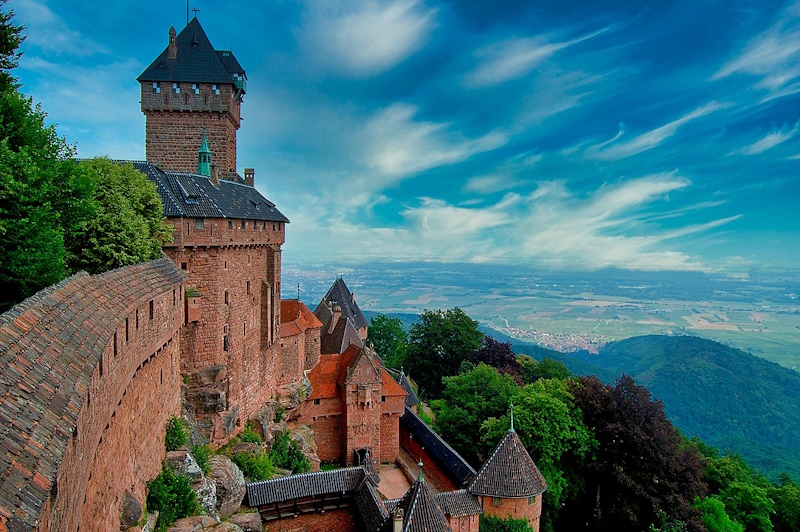
High on a rocky ridge, Haut-Koenigsbourg offers an amazing view over the Rhine plain. From the top towers, the view stretches on a clear day to the Black Forest and even the Alps.
The fortress was built to watch over one of the busiest trade routes in medieval Europe. Caravans carrying salt and wine once moved along the plain below the fortress walls.
The castle was first built in the 12th century, then abandoned for centuries before being restored in the early 20th century under Kaiser Wilhelm II. The reconstruction is detailed with drawbridges, artillery platforms, and grand halls that all evoke medieval life.
8. Obernai
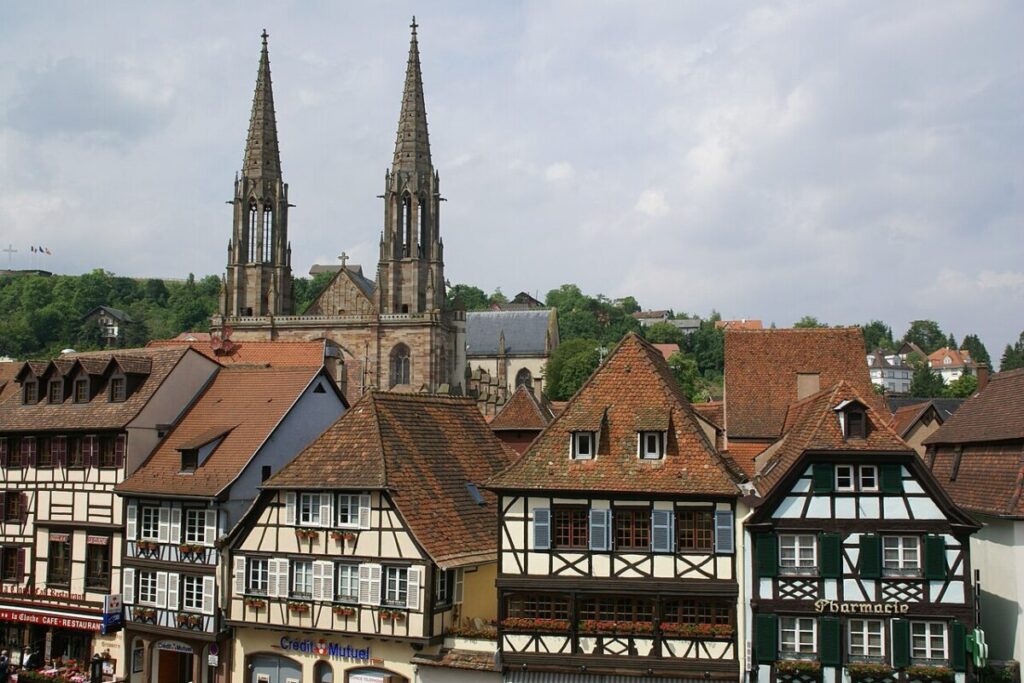
Obernai is a lively market town at the foot of Mont Sainte-Odile. Its main square is framed by the Renaissance town hall and a tall belfry, with arcaded houses facing in.
Weekly markets fill the square with cheeses, cured meats, and produce from the surrounding countryside. The town is also a good base for hikes or short drives into the Vosges.
9. Mont Sainte-Odile
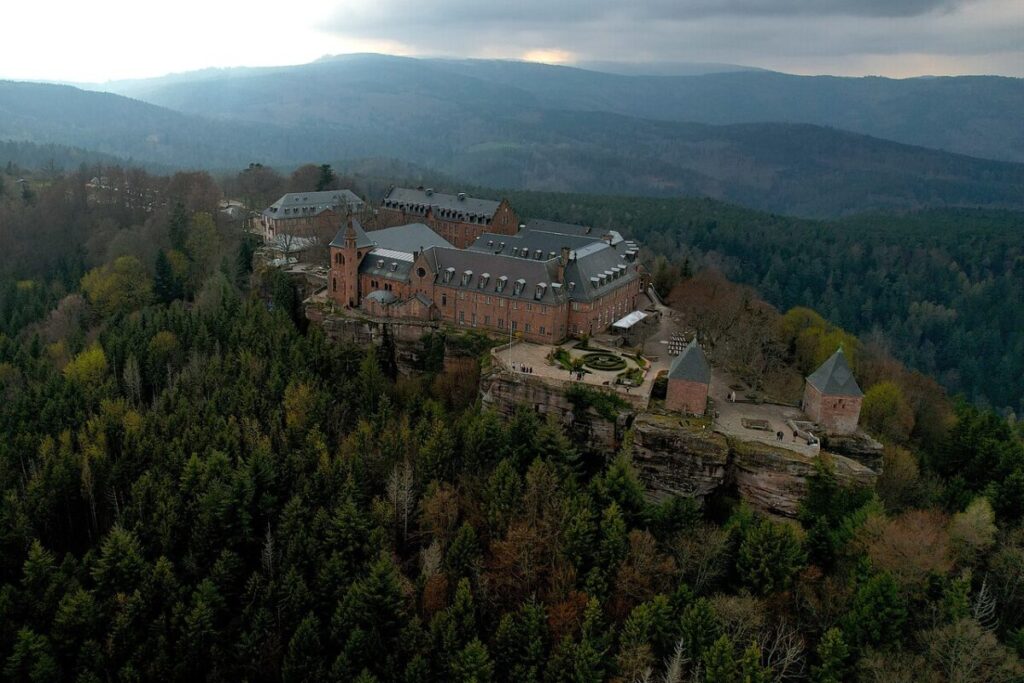
Mont Sainte-Odile is a monastery and a great lookout point. The convent is dedicated to Saint Odile who is considered the patron saint of Alsace.
Pilgrims and visitors walk through cloisters and chapels perched nearly 760 meters above the plain.
Around the summit runs the Pagan Wall, a mysterious stone enclosure built of enormous blocks whose origins are still debated.
From the terraces, the view covers vineyards, villages, and on clear days the Black Forest across the Rhine.
10. Mulhouse
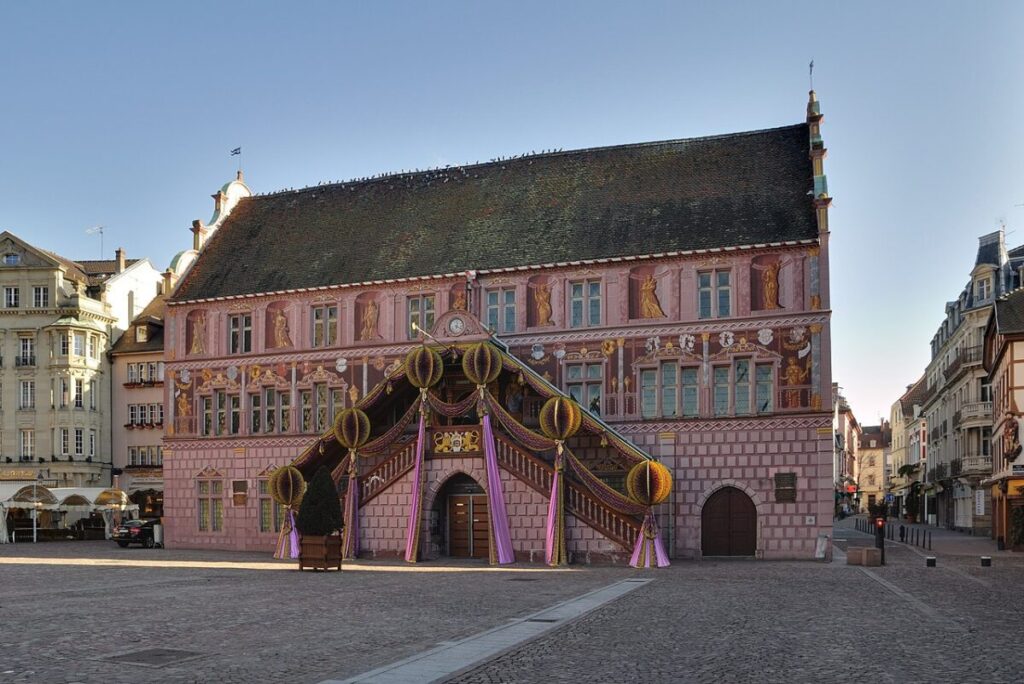
Once industrial, Mulhouse has turned its past into cultural strength. The Cité de l’Automobile holds over 400 classic cars, including the world’s largest Bugatti collection.
The Cité du Train traces the story of French rail, from steam locomotives to high-speed TGVs.
Mulhouse also has a lively covered market and neighborhoods filled with large murals and street art. An intriguing contrast to the region’s medieval villages.
